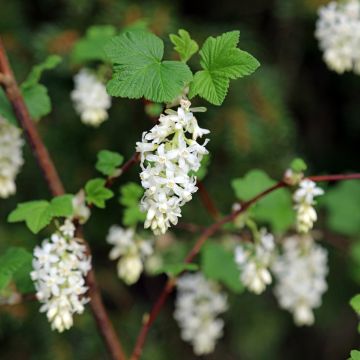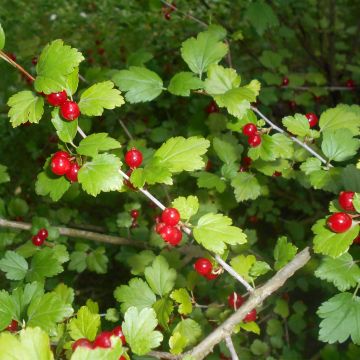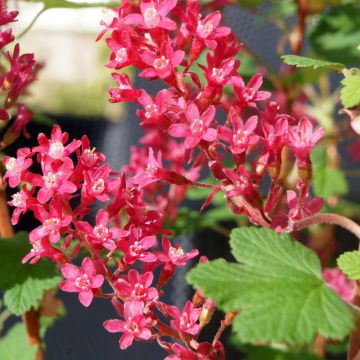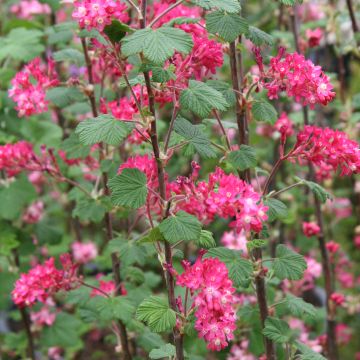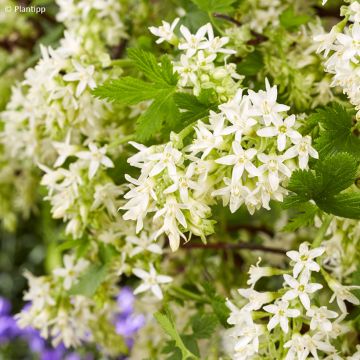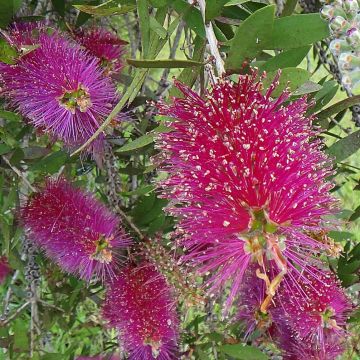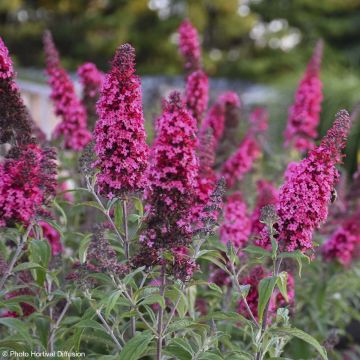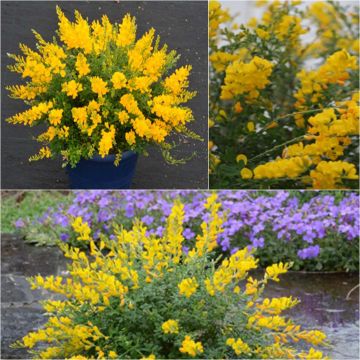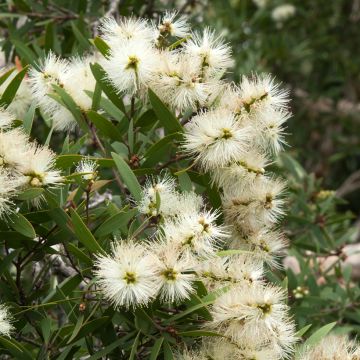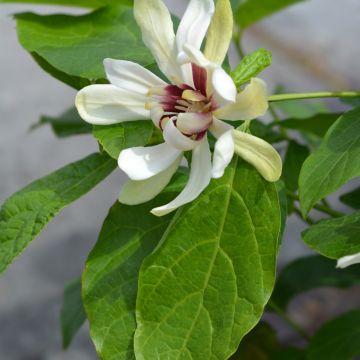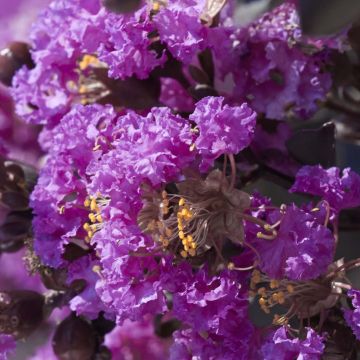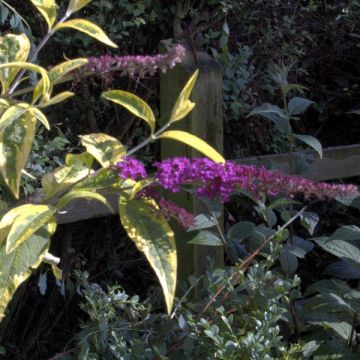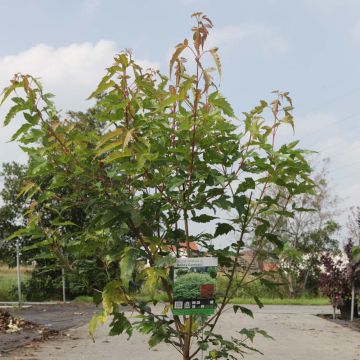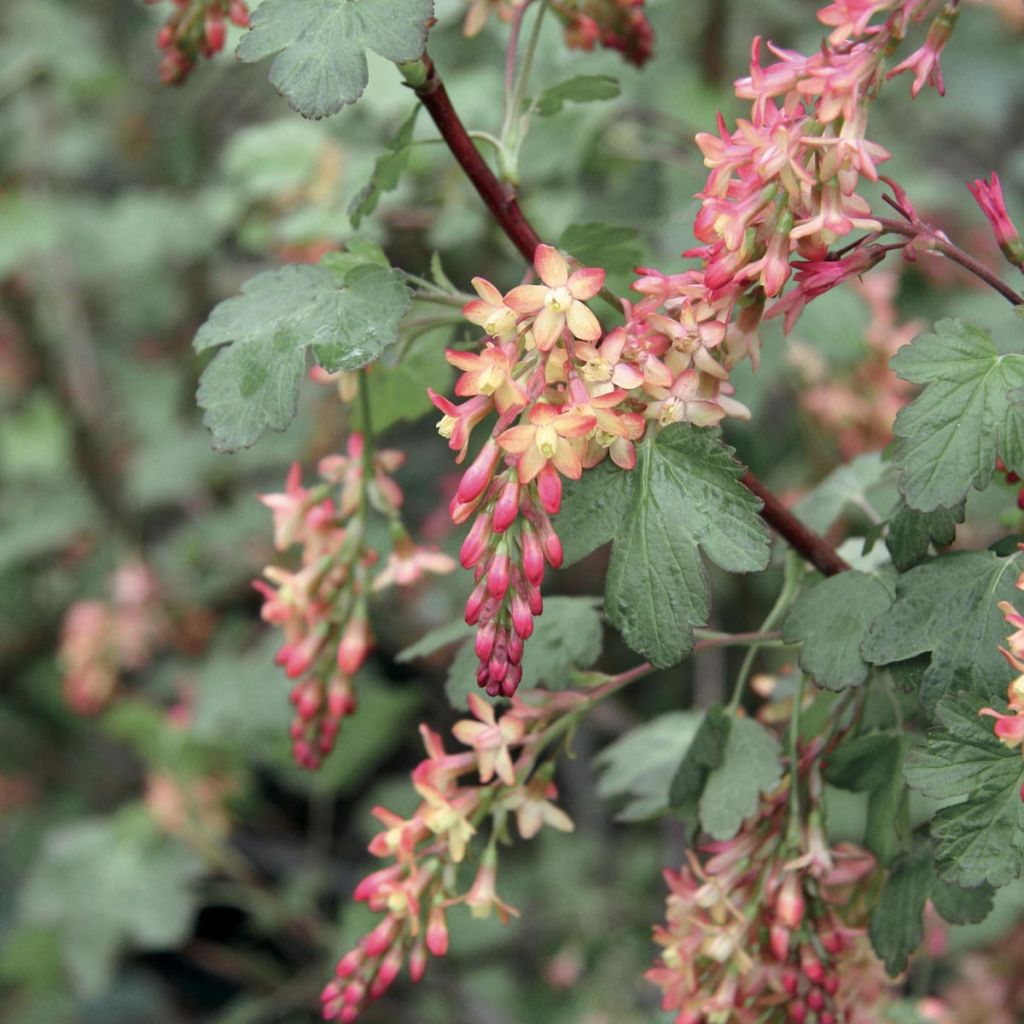

Ribes gordonianum - Gordon's Currant
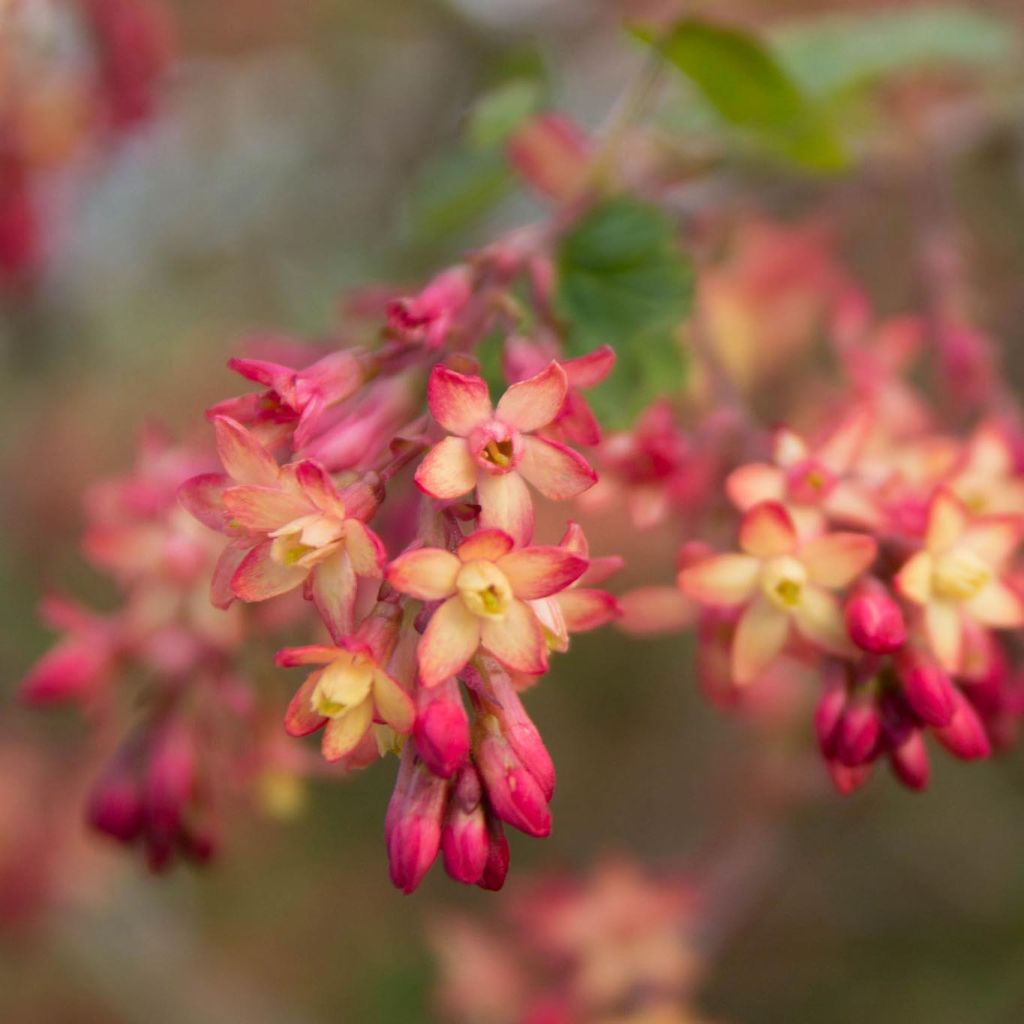

Ribes gordonianum - Gordon's Currant
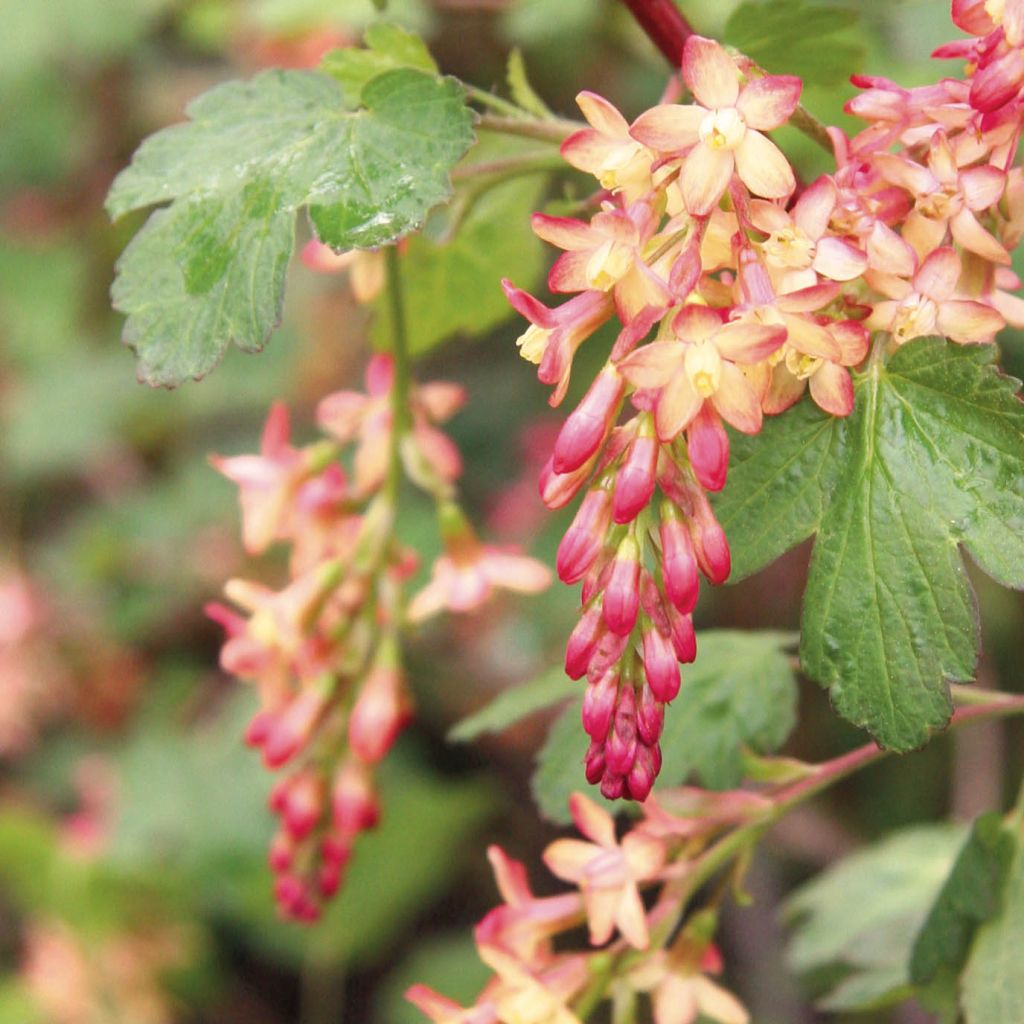

Ribes gordonianum - Gordon's Currant
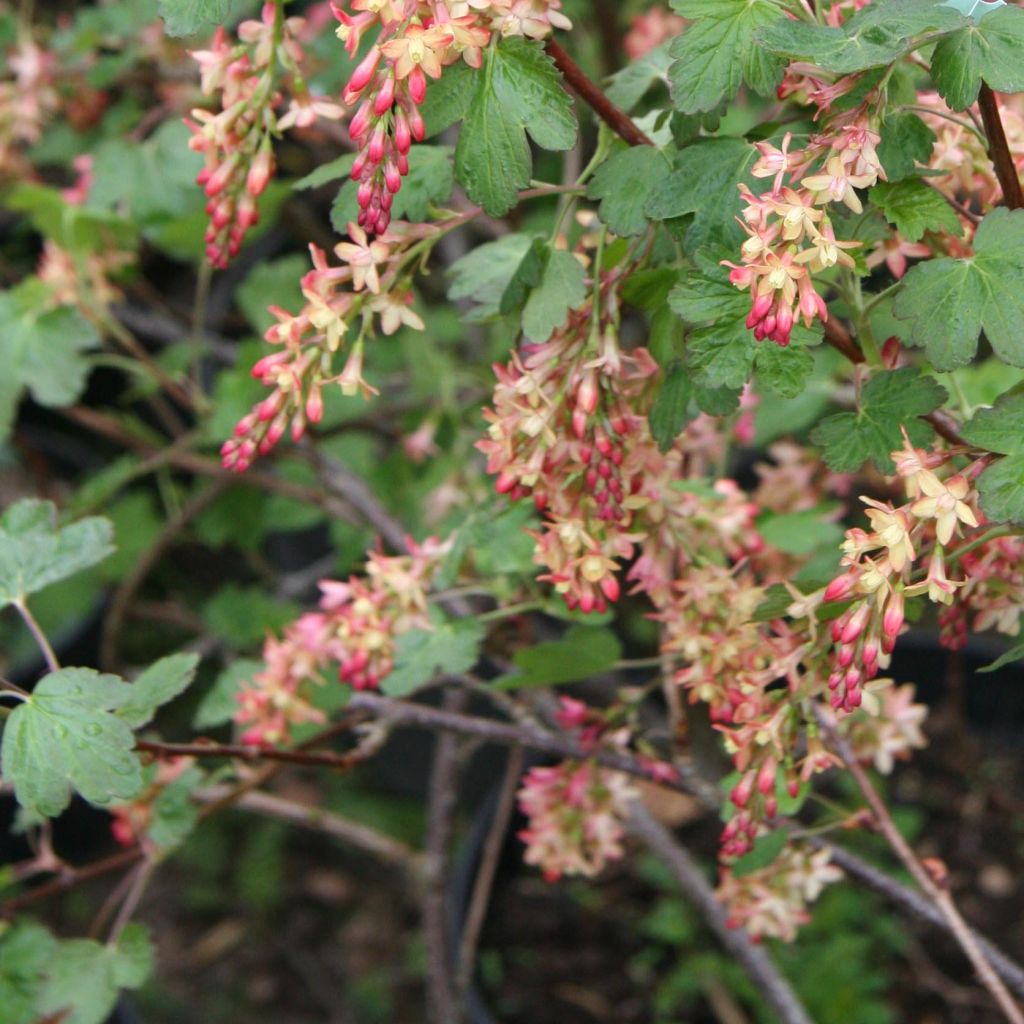

Ribes gordonianum - Gordon's Currant
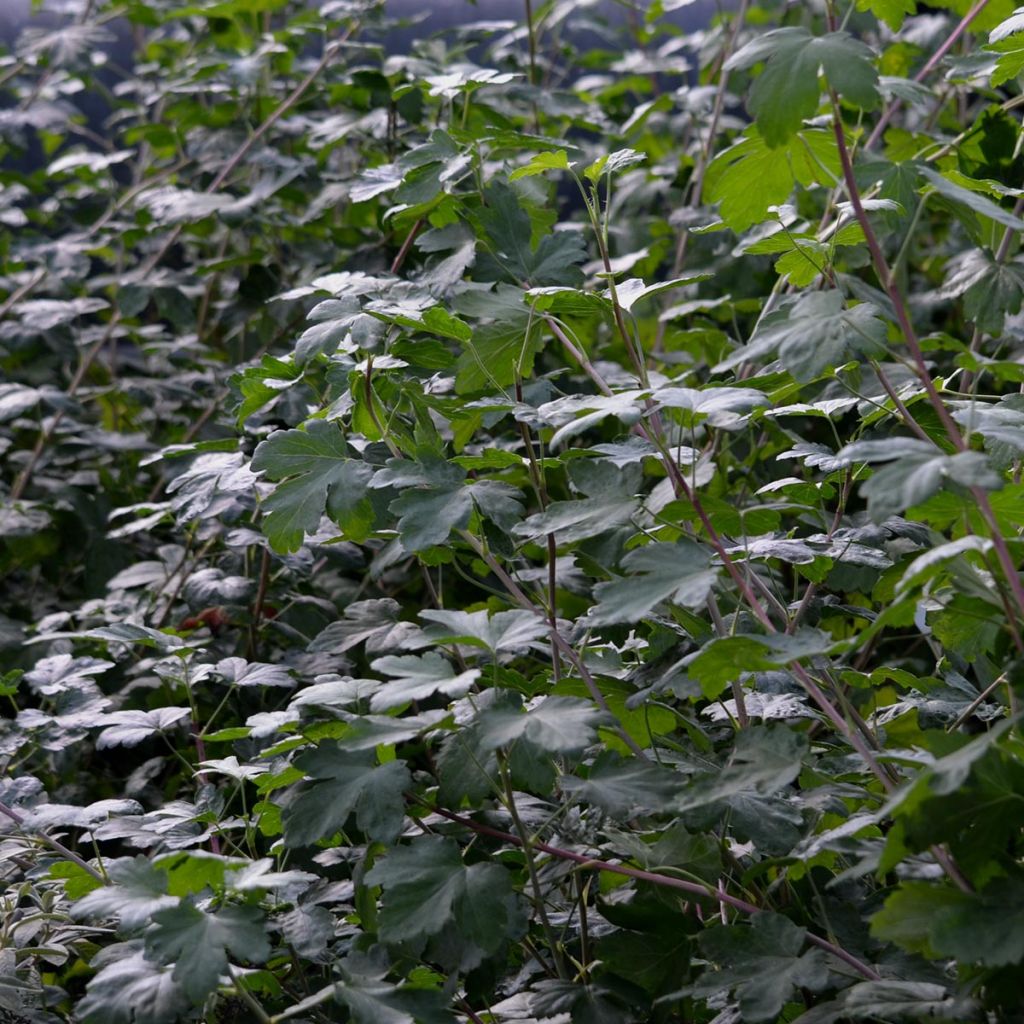

Ribes gordonianum - Gordon's Currant
Ribes gordonianum - Gordon's Currant
Ribes x gordonianum
Gordon's Currant, Gordon's Gooseberry
This item cannot be shipped to the selected country
Delivery charge from €5.90
More information
Schedule delivery date,
and select date in basket
This plant carries a 24 months recovery warranty
More information
We guarantee the quality of our plants for a full growing cycle, and will replace at our expense any plant that fails to recover under normal climatic and planting conditions.
From €5.90 for pickup delivery and €6.90 for home delivery
Express home delivery from €8.90.

Does this plant fit my garden?
Set up your Plantfit profile →
Description
The Ribes gordonianum, known as Gordon's Currant, is a hybrid obtained by cross-breeding Ribes sanguineum and Ribes odoratum. It is a sprawling, bushy, original, and easy to grow bush, but still rare in our gardens. It offers magenta buds that lead to spring flowering in coppery clusters formed of tubular red flowers with a cream or peach throat,giving off a sweet carnation fragrance. The dark green and deciduous foliage is also aromatic.
The Gordon's Flowering Currant belongs to the Grossulariaceae family. The west and central plains of the United States are the cradles of its two parents. It will reach 1.80 m (5 ft 11 in) in height and spread over 1 m (3 ft 4 in), for rapid growth. This flowering currant is a deciduous bush that has an upright and bushy habit, with a sprawling tendency. After the leaves have budded in April-May, pendulous racemes of small, tubular, magenta red blooms mixed with peach and marked with cream at the throat, appear. They are nectar-producing and measure about 8 cm (3.1 in). This fragrant and so welcome spring flowering follows that of the Ribes sanguineum. This plant produces small black berries which the birds love. Its dark green, round to ovate, 5 to 10 cm (2 to 3.9 in) long leaves have 3 to 5 shallow irregularly dentate lobes and give off a delicious fragrance.
Plant the Ribes gordonianum in ordinary, deep, rich, cool to dry soil, without too much lime. This bush will thrive in semi-shade or sun, but not in a scorching exposure. Once established, it will tolerate drought relatively well. The start of growth is often late in the first spring. When planting, do not shy from burying part of the base to promote good rooting. Pruning is not necessary except to remove dead wood or correct a somewhat sparse appearance. The branches should be cut back by a third of their length after flowering.
Maintenance pruning: if you simply want to maintain shape, just remove any weak or overly arched branches and dead wood. Rejuvenation pruning: for plants that have become too cumbersome or have lost their bushy shape (base thinning, sparse branches), it is advisable to cut the branches to 50 cm (19.7 in) from the ground. You can perform both all at once (strict pruning, for older subjects) or over 3 years (then only a third of the branches are pruned each year, making sure a balanced look of the bush is maintained). The bush will then form new shoots.
Gordon's Currant will find its place in all gardens, in a free hedge, shrub bed, or even as a stand-alone. It has a strong presence when grown in a pot. You can include it among a spring display with lilacs, buddleias, the Mexican Orange, the Syringa microphylla 'Superba', the Exochorda racemosa 'The Bride' or even the 'Hollandia' broom. Planted in groups of three or four mixed together, the Flowering Currants produce an extraordinary effect, particularly at the back of perennial beds. Finally, to fully enjoy its flowers and fragrance, you can cut budding branches that will bloom in the home.
Report an error about the product description
Ribes gordonianum - Gordon's Currant in pictures




Plant habit
Flowering
Foliage
Botanical data
Ribes
x gordonianum
Grossulariaceae
Gordon's Currant, Gordon's Gooseberry
Cultivar or hybrid
Other Ribes - Flowering Currants
Planting and care
Plant the Ribes gordonianum in ordinary, deep, rich, from cool to dry soil, without too much lime. This bush will thrive in semi-shade or sun, but not in a scorching exposure. Once established, it will tolerate drought relatively well. The start of growth is often late in the first spring. When planting, do not shirk from burying part of the base to encourage good rooting. Pruning is not necessary, except to remove dead wood or correct a somewhat sparse habit. Cut back the branches by a third of their length after flowering. Maintenance pruning: if you simply wish to maintain shape, just remove any weak or overly arched branches and dead wood. Rejuvenation pruning: for bushes that have become too cumbersome or have lost their shape (base thinning, sparse branches), it is advisable to prune the branches 50 cm (19.7 in) from the ground. You can do this all at once (rigorous pruning, for older plants) or over 3 years (you then only prune a third of the branches each year, ensuring you maintain a balanced look of the bush). The bush will then form new shoots.
Planting period
Intended location
Care
-
, onOrder confirmed
Reply from on Promesse de fleurs
Hedge shrubs
Haven't found what you were looking for?
Hardiness is the lowest winter temperature a plant can endure without suffering serious damage or even dying. However, hardiness is affected by location (a sheltered area, such as a patio), protection (winter cover) and soil type (hardiness is improved by well-drained soil).

Photo Sharing Terms & Conditions
In order to encourage gardeners to interact and share their experiences, Promesse de fleurs offers various media enabling content to be uploaded onto its Site - in particular via the ‘Photo sharing’ module.
The User agrees to refrain from:
- Posting any content that is illegal, prejudicial, insulting, racist, inciteful to hatred, revisionist, contrary to public decency, that infringes on privacy or on the privacy rights of third parties, in particular the publicity rights of persons and goods, intellectual property rights, or the right to privacy.
- Submitting content on behalf of a third party;
- Impersonate the identity of a third party and/or publish any personal information about a third party;
In general, the User undertakes to refrain from any unethical behaviour.
All Content (in particular text, comments, files, images, photos, videos, creative works, etc.), which may be subject to property or intellectual property rights, image or other private rights, shall remain the property of the User, subject to the limited rights granted by the terms of the licence granted by Promesse de fleurs as stated below. Users are at liberty to publish or not to publish such Content on the Site, notably via the ‘Photo Sharing’ facility, and accept that this Content shall be made public and freely accessible, notably on the Internet.
Users further acknowledge, undertake to have ,and guarantee that they hold all necessary rights and permissions to publish such material on the Site, in particular with regard to the legislation in force pertaining to any privacy, property, intellectual property, image, or contractual rights, or rights of any other nature. By publishing such Content on the Site, Users acknowledge accepting full liability as publishers of the Content within the meaning of the law, and grant Promesse de fleurs, free of charge, an inclusive, worldwide licence for the said Content for the entire duration of its publication, including all reproduction, representation, up/downloading, displaying, performing, transmission, and storage rights.
Users also grant permission for their name to be linked to the Content and accept that this link may not always be made available.
By engaging in posting material, Users consent to their Content becoming automatically accessible on the Internet, in particular on other sites and/or blogs and/or web pages of the Promesse de fleurs site, including in particular social pages and the Promesse de fleurs catalogue.
Users may secure the removal of entrusted content free of charge by issuing a simple request via our contact form.
The flowering period indicated on our website applies to countries and regions located in USDA zone 8 (France, the United Kingdom, Ireland, the Netherlands, etc.)
It will vary according to where you live:
- In zones 9 to 10 (Italy, Spain, Greece, etc.), flowering will occur about 2 to 4 weeks earlier.
- In zones 6 to 7 (Germany, Poland, Slovenia, and lower mountainous regions), flowering will be delayed by 2 to 3 weeks.
- In zone 5 (Central Europe, Scandinavia), blooming will be delayed by 3 to 5 weeks.
In temperate climates, pruning of spring-flowering shrubs (forsythia, spireas, etc.) should be done just after flowering.
Pruning of summer-flowering shrubs (Indian Lilac, Perovskia, etc.) can be done in winter or spring.
In cold regions as well as with frost-sensitive plants, avoid pruning too early when severe frosts may still occur.
The planting period indicated on our website applies to countries and regions located in USDA zone 8 (France, United Kingdom, Ireland, Netherlands).
It will vary according to where you live:
- In Mediterranean zones (Marseille, Madrid, Milan, etc.), autumn and winter are the best planting periods.
- In continental zones (Strasbourg, Munich, Vienna, etc.), delay planting by 2 to 3 weeks in spring and bring it forward by 2 to 4 weeks in autumn.
- In mountainous regions (the Alps, Pyrenees, Carpathians, etc.), it is best to plant in late spring (May-June) or late summer (August-September).
The harvesting period indicated on our website applies to countries and regions in USDA zone 8 (France, England, Ireland, the Netherlands).
In colder areas (Scandinavia, Poland, Austria...) fruit and vegetable harvests are likely to be delayed by 3-4 weeks.
In warmer areas (Italy, Spain, Greece, etc.), harvesting will probably take place earlier, depending on weather conditions.
The sowing periods indicated on our website apply to countries and regions within USDA Zone 8 (France, UK, Ireland, Netherlands).
In colder areas (Scandinavia, Poland, Austria...), delay any outdoor sowing by 3-4 weeks, or sow under glass.
In warmer climes (Italy, Spain, Greece, etc.), bring outdoor sowing forward by a few weeks.

































